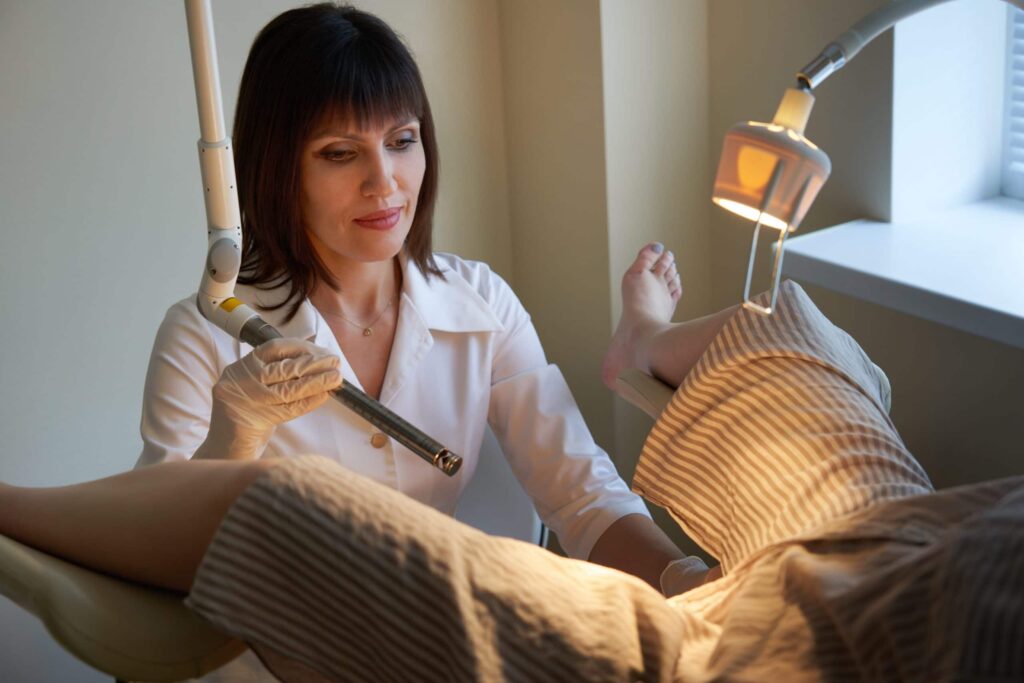
Dr Sue Ho: Can Vaginal Relaxation Syndrome Be Cured With Lasers?
- September 9, 2023


Apart from beautifying their faces, many women come to me for a condition. VRS is common after childbirth as the vaginal wall is overstretched. Other reasons for VRS is connective tissue weakness and natural decrease in collagen production. Vaginal Relaxation Syndrome (VRS). Though rarely discussed openly, vaginal relaxation is a prevalent condition that can occur for various reasons.
We recognise the potential impact of VRS on your life, and we want to create a safe space where we can openly explore this topic to help you make informed decisions about your health.
In this blog post, join us as we discuss the primary causes behind VRS, seeking to demystify the condition and dispel any misconceptions surrounding it. Understanding the underlying causes can pave the way for treatment options that can improve your life.
Vaginal Relaxation Syndrome (VRS) is characterised by the loss of tone and tightness in the vaginal tissues and muscles. It manifests through various symptoms that can significantly affect a woman’s life and intimate relationships.
Decreased Sensation During Intercourse
One of the most common symptoms experienced by women with VRS is a decreased sensation during sexual intercourse. This reduced sensitivity may lead to diminished sexual satisfaction and affect your intimate relationships.
Vaginal Laxity
Women with VRS often notice a sense of looseness or laxity in the vaginal tissues. VRS can be attributed to the loss of tone in the vaginal muscles, which may cause discomfort or dissatisfaction during sexual activity.
Urinary Incontinence
VRS can weaken the pelvic floor muscles, leading to urinary incontinence. You may experience unintentional urine leakage during activities such as laughing, sneezing, or lifting heavy objects.
Faecal Incontinence
In more severe cases, VRS can also impact the anal sphincter muscles, resulting in faecal incontinence, where you may have difficulty controlling bowel movements.
Feeling of “Something Falling Out”
Women with VRS might describe a sensation of “something falling out” of the vagina, especially when standing or during physical activities. This sensation can be distressing and affect your daily life.
Tampon Displacement
VRS can lead to difficulties in maintaining the position of tampons or even make their use uncomfortable and less effective.
Understanding the underlying causes of VRS is important if you are seeking relief from its symptoms and hoping to regain control of your pelvic health. Contrary to popular belief, VRS is not just caused by childbirth. The primary factors that contribute to VRS range from natural life events to genetic influences.
The process of childbirth places significant strain on the vaginal tissues and muscles as they stretch to accommodate the baby’s passage through the birth canal. While your body is remarkably resilient and designed to adapt to this process, it may not always fully regain its pre-pregnancy state, leading to VRS.
Women who have had multiple childbirths or have given birth at an older age might be more susceptible to VRS. With each pregnancy and childbirth, the vaginal muscles undergo additional stretching, contributing to increased laxity over time.
With age, there is a gradual decline in oestrogen production in your body, particularly during perimenopause and menopause. Oestrogen contributes to the health and elasticity of vaginal tissues. Reduced oestrogen levels can result in thinning and drying of your vaginal walls, making them less flexible and more susceptible to laxity. This condition is called vagina atrophy.
Over time, the muscles of your pelvic floor, which support the vaginal canal, may weaken or lose their tone. This loss of muscle support leads to looseness in the vagina and contributes to VRS.
Age-related hormonal changes can also cause a decrease in vaginal lubrication, making sexual intercourse potentially painful.
Genetic variations can influence the strength and integrity of the connective tissues in your pelvic region, which support the vaginal muscles.
Moreover, some women may inherit connective tissue disorders that weaken pelvic support and increase the risk of VRS. In this sense, VRS may run in families.
Excessive body weight can put additional pressure on your pelvic floor muscles and the connective tissues that support the vaginal walls. This increased pressure can weaken the pelvic floor and lead to a feeling of laxity in the vagina, contributing to VRS.
Obesity is also a known risk factor for urinary incontinence, which can strain the pelvic floor muscles and worsen VRS.
VRS can have a far-reaching impact on physical and emotional levels, influencing various aspects of your life.
The condition can profoundly impact your self-esteem and body image, leading to feelings of insecurity, particularly in intimate relationships. It reduces sexual satisfaction and causes discomfort during intercourse, straining those intimate connections.
You may find urinary or faecal incontinence from VRS disrupting your daily life and social interactions as it causes potential embarrassment. Furthermore, the physical discomfort from VRS symptoms can hinder you from activities you once enjoyed, affecting your overall lifestyle.
Finally, VRS may leave you feeling stressed, anxious, and even depressed as you grapple with its emotional toll.
Women with VRS are often pointed to pelvic floor exercises to strengthen their pelvic floor muscles and improve their pelvic health.
These exercises include:
Apart from exercises, patients with VRS are also advised to avoid the following:
While the above are helpful, we need to keep a few things in mind.
Pelvic exercises can relief symptoms associated with pelvic floor dysfunction (e.g. incontinence), but they fail to address other symptoms of VRS, such as the feeling of “looseness” or lack of pleasure during sexual intimacy.
Don’t get me wrong – I do advise patients to adhere to the guidelines provided as they can prevent the worsening of symptoms. But if you are looking to feel better and gain back a bit of what you once had, more must be done.
At its core, VRS is caused by the deterioration of collagen and vaginal tissues – which means treatment must involve replenishing that collagen and improving the quality of those tissues through, well, collagen production.
And there is a way we can safely do that without surgery: Lasers.
Finding effective solutions to address VRS is essential for enhancing pelvic health and restoring confidence. SL Aesthetic Clinic provides laser vaginal rejuvenation treatments specifically designed to target VRS symptoms.
These non-invasive procedures harness the power of advanced laser technology to induce vaginal tightening and improve laxity. Results can typically be seen after the first session if you have mild VRS, or after two to three sessions if you have severe VRS.
Fotona IncontiLase is a non-invasive laser therapy that treats mild to moderate stress urinary incontinence. When this treatment was performed on 132 women for a study, 96.8% of them indicated improvement in urinary incontinence, while 19% achieved continence.
The laser treatment stimulates collagen production to effectively tighten and support the vaginal tissues, reducing leakage. The treatment can also improve the appearance of the exterior vaginal folds.
Fotona IncontiLase is a simple procedure that requires no preparation, and there is no downtime afterwards, except for avoiding sexual activity for 72 hours. The safe and painless treatment can even be done during your lunch hour.
Fotona IntimaLase is a non-invasive Erbium: YAG non-ablative laser therapy that tightens the vaginal wall using photothermal energy. The laser targets vaginal tissue and stimulates the production of new collagen fibres, tightening the vaginal walls safely and comfortably. It can also improve the appearance of the exterior vaginal folds, and the treatment is quick and straightforward, often done within an hour.
Fotona RenovaLase is a non-invasive laser treatment for vaginal atrophy. It uses controlled mild heating of the vaginal tissue with Erbium: YAG laser to stimulate collagen formation and improve blood flow without damaging the tissue.
This vaginal rejuvenation treatment increases the thickness of the vaginal walls and reduces symptoms like dryness, itching, and irritation. The laser gently heats the vaginal tissue during the treatment without harming the skin. It operates at the skin’s maximum absorption level for optimal results. Erbium: YAG laser has been proven to help with vaginal wall relaxation.
Fotona RenovaLase is safe even for patients with oestrogen-dependent cancers or a family history of such cancers.
VRS can significantly impact your physical and emotional well-being, affecting your self-confidence, intimacy, and overall quality of life. Fortunately, laser vaginal rejuvenation treatments like Fotona RenovaLase and Fotona IntimaLase offer safe and non-invasive solutions to address VRS symptoms effectively.
With minimal discomfort and little to no side effects, these procedures can be performed by our experienced doctors at SL Aesthetic Clinic.
Explore the transformative benefits of laser vaginal tightening and take control of your pelvic health. Book a consultation with SL Aesthetic Clinic today.
Like what you read? Share them!